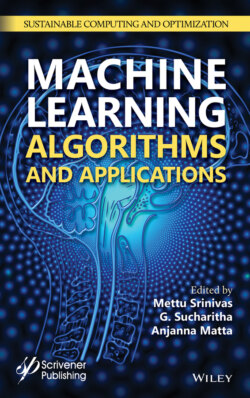Читать книгу Machine Learning Algorithms and Applications - Группа авторов - Страница 31
2.3 Proposed Method
ОглавлениеTwo of the main parameters that vary during capturing digital data for image processing are the size of the silkworm egg and uniform illumination spread across the image. Firstly, since the image processing (including blob analysis) algorithms are designed to identify a particular egg size or range of egg sizes, exceeding this limit causes error in the final result. Since no constant distance is set between the egg sheet and camera, in any of the earlier papers, the pixel size of captured eggs varies which causes the problem to the image processing algorithm. Also, the irregular distribution of illumination over ROI causes the digital cameras to record the data slightly in a different way, which may over saturate or under saturate the ROI. The image processing algorithms such as contrast stretch and histogram equalization perform well on the limited scenario and do not provide complete confidence to enhance low-quality data.
To overcome these issues, a constant illumination light source with a fixed distance between camera and egg sheets of a paper scanner is used to capture the digital data of the silkworm egg sheets. Since the distance between the camera array of the paper scanner is fixed, the egg size can be approximated to stay within a specific range, i.e., around 28 to 36 pixels in diameter in our experiment. However, not all manufacturers of paper scanner follow strict dimensions while designing, hence the silkworm eggs scanned with different scanner results are found to be different. For example, the eggs scanned with Canon® scanner have a diameter of 28 to 32 pixels under, while 36 to 40 pixels with Hewlett-Packard® (HP) scanners for the same resolution and dots per inch (dpi).
Figure 2.1 Adding a key marker on the silkworm egg sheet.
Also, by changing the scanner parameters such as resolution and dpi, the resulting egg diameter is of different pixels size for the same scanner. Hence, a key marker is printed on the egg sheet before it is scanned to capture the details in a digital format. The dimension of the key marker is 100 × 100 pixels (10 × 10 mm) which are considered as a standard dimension in our experiment. Let R(hxw) be the standard resolution required by the image processing algorithm, while R′(h’xw’) be the resolution at which the egg sheet is scanned and R″ is the resulting resolution of the image. Also, let (Dx, Dy) be the standard dimensions of the key marker, while is the key marker dimension calculated from the new scan. Figure 2.1 shows a part of the silkworm egg sheet before and after the key marker was stamped. Figure 2.1 (left) represents the original egg sheet while Figure 2.1 (right) represents the egg sheet with key marker stamped. Equations (2.1) to (2.3) represent the method of converting images with any dpi into the standard dpi by comparing the dimensions (Dx, Dy) with , where R″ values are used in image processing platforms such as MATLAB to resize the image sheet to match the standard required dimensions.
(2.2)
